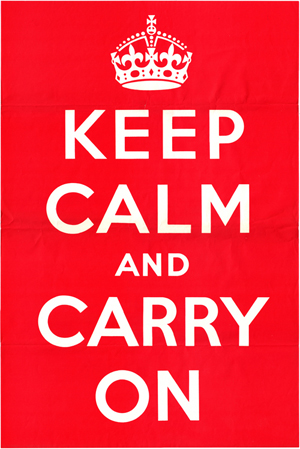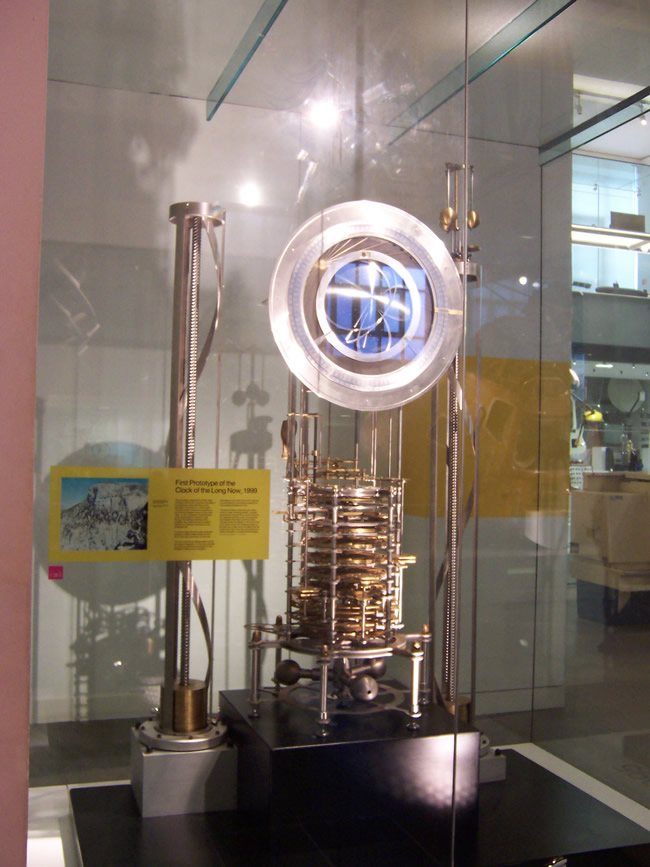
Perhaps heaven is littered with the disembodied, collective consciousness of Woolworth, Circuit City, Borders and Blockbuster. Similarly, it may be possible that Enron and Lehman Brothers, a little less fortunate due to the indiscretions of their leaders, have found their corporate souls to be forever tormented in business hell. And, what of the high tech start-ups that come and go in the beat of a hummingbird’s wing? Where are Webvan, Flooz, Gowalla, Beenz, Loopt, Kosmo, eToys and Pets.com? Are they spinning endlessly somewhere between the gluttons (third circle) and the heretics (sixth circle) in Dante’s concentric hell. And where are the venture capitalists and where will Burger King and Apple find themselves when they eventually pass to the other side?
This may all seem rather absurd. It is. Yet, the evangelical corporate crusaders such as Hobby Lobby and Chick Fil A would have us treat their corporations just as we do mere (im)mortals. Where is all this nonsense heading? Well, the Supreme Court of the United States, of course.
[div class=attrib]From the New York Times:[end-div]
David Green, who built a family picture-framing business into a 42-state chain of arts and crafts stores, prides himself on being the model of a conscientious Christian capitalist. His 525 Hobby Lobby stores forsake Sunday profits to give employees their biblical day of rest. The company donates to Christian counseling services and buys holiday ads that promote the faith in all its markets. Hobby Lobby has been known to stick decals over Botticelli’s naked Venus in art books it sells.
And the company’s in-house health insurance does not cover morning-after contraceptives, which Green, like many of his fellow evangelical Christians, regards as chemical abortions.
“We’re Christians,” he says, “and we run our business on Christian principles.”
This has put Hobby Lobby at the leading edge of a legal battle that poses the intriguing question: Can a corporation have a conscience? And if so, is it protected by the First Amendment.
The Affordable Care Act, a k a Obamacare, requires that companies with more than 50 full-time employees offer health insurance, including coverage for birth control. Churches and other purely religious organizations are exempt. The Obama administration, in an unrequited search for compromise, has also proposed to excuse nonprofit organizations such as hospitals and universities if they are affiliated with religions that preach the evil of contraception. You might ask why a clerk at Notre Dame or an orderly at a Catholic hospital should be denied the same birth control coverage provided to employees of secular institutions. You might ask why institutions that insist they are like everyone else when it comes to applying for federal grants get away with being special when it comes to federal health law. Good questions. You will find the unsatisfying answers in the Obama handbook of political expediency.
But these concessions are not enough to satisfy the religious lobbies. Evangelicals and Catholics, cheered on by anti-abortion groups and conservative Obamacare-haters, now want the First Amendment freedom of religion to be stretched to cover an array of for-profit commercial ventures, Hobby Lobby being the largest litigant. They are suing to be exempted on the grounds that corporations sometimes embody the faith of the individuals who own them.
“The legal case” for the religious freedom of corporations “does not start with, ‘Does the corporation pray?’ or ‘Does the corporation go to heaven?’ ” said Kyle Duncan, general counsel of the Becket Fund for Religious Liberty, which is representing Hobby Lobby. “It starts with the owner.” For owners who have woven religious practice into their operations, he told me, “an exercise of religion in the context of a business” is still an exercise of religion, and thus constitutionally protected.
The issue is almost certain to end up in the Supreme Court, where the betting is made a little more interesting by a couple of factors: six of the nine justices are Catholic, and this court has already ruled, in the Citizens United case, that corporations are protected by the First Amendment, at least when it comes to freedom of speech. Also, we know that at least four members of the court don’t think much of Obamacare.
In lower courts, advocates of the corporate religious exemption have won a few and lost a few. (Hobby Lobby has lost so far, and could eventually face fines of more than $1 million a day for defying the law. The company’s case is now before the Court of Appeals for the 10th Circuit.)
You can feel some sympathy for David Green’s moral dilemma, and even admire him for practicing what he preaches, without buying the idea that la corporation, c’est moi. Despite the Supreme Court’s expansive view of the First Amendment, Hobby Lobby has a high bar to get over — as it should.
[div class=attrib]Read the entire article following the jump.[end-div]
[div class=attrib]Image: Gluttony: The circle itself is a living abomination, a hellish digestive system revealing horrific faces with mouths ready to devour the gluttons over and over for eternity. Picture: Mihai Marius Mihu / Rex Features / Telegraph. To see more of the nine circles of hell from Dante’s Inferno recreated in Lego by artist Mihai Mihu jump here.[end-div]





 Leaving the merits of capitalism or socialism aside for a moment, let’s consider the case for taxing bad behavior versus good. Adam Davidson, economics columnist and founder of NPR’s Planet Money, reviews the case now being made by a growing number of economists on both the left and the right. They all come to a similar conclusion: Forget about taxing good or constrictive behavior such as entrepreneurialism. Rather, it’s time to tax people for doing destructive and damaging things.
Leaving the merits of capitalism or socialism aside for a moment, let’s consider the case for taxing bad behavior versus good. Adam Davidson, economics columnist and founder of NPR’s Planet Money, reviews the case now being made by a growing number of economists on both the left and the right. They all come to a similar conclusion: Forget about taxing good or constrictive behavior such as entrepreneurialism. Rather, it’s time to tax people for doing destructive and damaging things. If you’re an office worker you will relate. Recently, you will have participated on a team meeting or conference call only to have at least one person say, when asked a question, “sorry can you please repeat that, I was multitasking.”
If you’re an office worker you will relate. Recently, you will have participated on a team meeting or conference call only to have at least one person say, when asked a question, “sorry can you please repeat that, I was multitasking.”
 With the election in the United States now decided, the dissection of the result is well underway. And, perhaps the biggest winner of all is the science of big data. Yes, mathematical analysis of vast quantities of demographic and polling data won over the voodoo proclamations and gut felt predictions of the punditocracy. Now, that’s a result truly worth celebrating.
With the election in the United States now decided, the dissection of the result is well underway. And, perhaps the biggest winner of all is the science of big data. Yes, mathematical analysis of vast quantities of demographic and polling data won over the voodoo proclamations and gut felt predictions of the punditocracy. Now, that’s a result truly worth celebrating. Blame corporate euphemisms and branding for the obfuscation of everyday things. More sinister yet, is the constant re-working of names for our ever increasingly processed foodstuffs. Only last year as several influential health studies pointed towards the detrimental health effects of high fructose corn syrup (HFC) did the food industry act, but not by removing copious amounts of the addictive additive from many processed foods. Rather, the industry attempted to re-brand HFC as “corn sugar”. And, now on to the battle over “soylent pink” also known as “pink slim”.
Blame corporate euphemisms and branding for the obfuscation of everyday things. More sinister yet, is the constant re-working of names for our ever increasingly processed foodstuffs. Only last year as several influential health studies pointed towards the detrimental health effects of high fructose corn syrup (HFC) did the food industry act, but not by removing copious amounts of the addictive additive from many processed foods. Rather, the industry attempted to re-brand HFC as “corn sugar”. And, now on to the battle over “soylent pink” also known as “pink slim”. For readers of thediagonal in North America “neurobollocks” would roughly translate to “neurobullshit”.
For readers of thediagonal in North America “neurobollocks” would roughly translate to “neurobullshit”. The long-term downward trend in the number injuries to young children is no longer. Sadly, urgent care and emergency room doctors are now seeing more children aged 0-14 years with unintentional injuries. While the exact causes are yet to be determined, there is a growing body of anecdotal evidence that points to distraction among patents and supervisors — it’s the texting stupid!
The long-term downward trend in the number injuries to young children is no longer. Sadly, urgent care and emergency room doctors are now seeing more children aged 0-14 years with unintentional injuries. While the exact causes are yet to be determined, there is a growing body of anecdotal evidence that points to distraction among patents and supervisors — it’s the texting stupid! Professional photographers take note: there will always be room for high-quality images that tell a story or capture a timeless event or exude artistic elegance. But, your domain is under attack, again — and the results are not particularly pretty. This time courtesy of Instagram.
Professional photographers take note: there will always be room for high-quality images that tell a story or capture a timeless event or exude artistic elegance. But, your domain is under attack, again — and the results are not particularly pretty. This time courtesy of Instagram. Hot from the TechnoSensual Exposition in Vienna, Austria, come clothes that can be made transparent or opaque, and clothes that can detect a wearer telling a lie. While the value of the former may seem dubious outside of the home, the latter invention should be a mandatory garment for all politicians and bankers. Or, for the less adventurous, millinery fashionistas, how about a hat that reacts to ambient radio waves?
Hot from the TechnoSensual Exposition in Vienna, Austria, come clothes that can be made transparent or opaque, and clothes that can detect a wearer telling a lie. While the value of the former may seem dubious outside of the home, the latter invention should be a mandatory garment for all politicians and bankers. Or, for the less adventurous, millinery fashionistas, how about a hat that reacts to ambient radio waves? When it comes to music a generational gap has always been with us, separating young from old. Thus, without fail, parents will remark that the music listened to by their kids is loud and monotonous, nothing like the varied and much better music that they consumed in their younger days.
When it comes to music a generational gap has always been with us, separating young from old. Thus, without fail, parents will remark that the music listened to by their kids is loud and monotonous, nothing like the varied and much better music that they consumed in their younger days. The last couple of decades has seen some remarkable cases of corporate excess and corruption. The deep-rooted human inclinations toward greed, telling falsehoods and exhibiting questionable ethics can probably be traced to the dawn of bipedalism. However, in more recent times we have seen misdeeds particularly in the business world grow in their daring, scale and impact.
The last couple of decades has seen some remarkable cases of corporate excess and corruption. The deep-rooted human inclinations toward greed, telling falsehoods and exhibiting questionable ethics can probably be traced to the dawn of bipedalism. However, in more recent times we have seen misdeeds particularly in the business world grow in their daring, scale and impact.





 No, not Ted Nugent or Ted Koppel or Ted Turner; we are talking about the TED.
No, not Ted Nugent or Ted Koppel or Ted Turner; we are talking about the TED. Seventeenth century polymath Blaise Pascal had it right when he remarked, “Distraction is the only thing that consoles us for our miseries, and yet it is itself the greatest of our miseries.”
Seventeenth century polymath Blaise Pascal had it right when he remarked, “Distraction is the only thing that consoles us for our miseries, and yet it is itself the greatest of our miseries.” Having just posted
Having just posted 
 For adults living in North America, the answer is that it’s probably more likely that they would prefer a rapist teacher as babysitter over an atheistic one. Startling as that may seem, the conclusion is backed by some real science, excerpted below.
For adults living in North America, the answer is that it’s probably more likely that they would prefer a rapist teacher as babysitter over an atheistic one. Startling as that may seem, the conclusion is backed by some real science, excerpted below. Six degrees of separation is commonly held urban myth that on average everyone on Earth is six connections or less away from any other person. That is, through a chain of friend of a friend (of a friend, etc) relationships you can find yourself linked to the President, the Chinese Premier, a farmer on the steppes of Mongolia, Nelson Mandela, the editor of theDiagonal, and any one of the other 7 billion people on the planet.
Six degrees of separation is commonly held urban myth that on average everyone on Earth is six connections or less away from any other person. That is, through a chain of friend of a friend (of a friend, etc) relationships you can find yourself linked to the President, the Chinese Premier, a farmer on the steppes of Mongolia, Nelson Mandela, the editor of theDiagonal, and any one of the other 7 billion people on the planet.